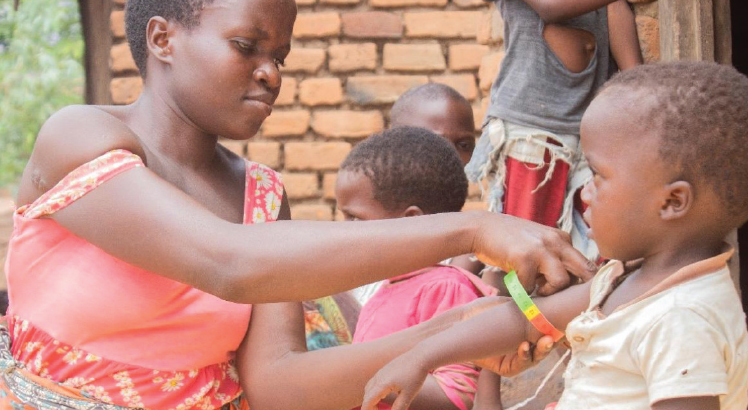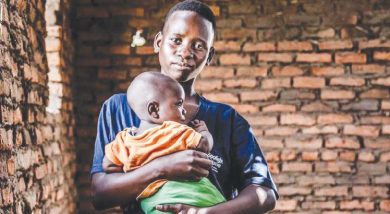Monitoring child nutrition at home
Memory Namoyo is a beneficiary of a project that aims to reduce stunting among Malawian children.
According to the Malawi Demographic and Health Survey of 2015, nearly one in three children in the country has low height for age, a sign of severe malnutrition.
The Scaling-Up-Nutrition (SUN) project strives to put a stop to nutritional challenges that slow the physical and mental growth of children.
Namoyo is also a caregroup promoter under Talandira Caregoup. Her work allows her to interact with parents, especially women, advising them about childcare.

“I decided to become a caregroup promoter so I could learn how to take care of my children better and feed them better,” she says.
Namoyo advises mothers on good nutrition and hygiene practices.
She tips caregivers on how to offer their children healthy food and the different recipes they can use.
“I also give advice to pregnant women during antenatal visits and healthy diets in the lead up to giving birth,” says Namoyo.
One of the latest initiatives within the SUN project requires care group promoters to distribute middle-upper circumference (Muac) tapes to households, giving parents the tools to assess their children’s nutrition status themselves.
In her village, 115 households have received Muac tapes.
“We advise parents to do a Muac test on their child every week. The project is helping. Child malnutrition in our area is going down. When promoters like me do additional assessments, we see the number of malnutrition cases falling,” Namoyo states.
The Department of Nutrition, HIV and Aids is implementing the SUN project in collaboration with Unicef with support from KfW, the German Development Bank.
Unicef nutrition specialist Jeanne Ejigui said Unicef and its partners piloted the family-based Muac approach in response to the Covid-19 pendemic.
The pandemic is transmitted through contact with droplets from infected persons when coughing or talking. The virus can be prevented through social distancing and avoiding crowded settings.
“Rather than having health workers assess children for malnutrition, this innovative approach has been shown to improve early identification and referral of children with wasting and has the potential of being more cost effective and sustainable in the long term,” said Ejigui.
Tiyamike Amon, 21, is one of the caregivers that received a Muac test for her children. She has two children—one aged five and another two.
“When I received the Muac test, I was told to choose a day every week when to assess my kids,” she says.
Amon applies the lessons from care group promoters to her day-to-day life.
“I have learned how to practise good hygiene and how to make nutritious meals for my children. I also used to have a backyard garden, which I am trying to grow again. It had a variety of vegetables like pumpkin leaves and sweet potato leaves.”





